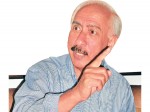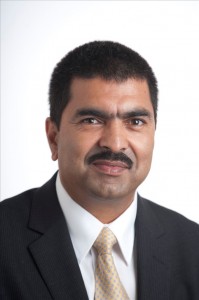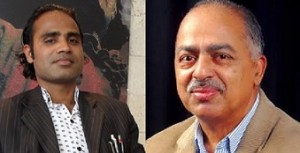
Introduction
The memory of taking classes in a temporary shelter made up of bamboo and tin after the 1988 earthquake is still vivid in my memory. The two-story building of my school on the slope of the mountain village in eastern Nepal was very badly shaken by the earthquake. We could not take classes in the old building. The villagers, teachers, and students worked very hard for many days to build a temporary shelter and run classes. I still remember that in the shelter we used to read aloud “Hello Sita, Hello Ram. Knock, Knock. Knock, Knock” to let our teachers know that we are engaged in doing our tasks. Many times, we could not take classes due to rain and storm. I don’t quite remember how our teachers helped us recover from dreadful experience from the disaster, but the Friday cultural programs and the outdoor activities including field trips were part of fun activities. I wish I had a camera or a cell phone to take the pictures of classes in the shelter during that time. Nobody in the village had these devices then. The situation now has changed a lot. The villagers have cellphones to take pictures and upload them on Facebook to share with wider audience about the updates from the village. We have seen the “social media power” during and post-disaster stage of the April 25 earthquake.
The 7.8 magnitude (April 25, 2015), followed by hundreds of aftershocks including the 7.4 magnitude (May 12, 2015)– took more than 9,000 people’s lives and destroyed more than 510,762 homes. Various news reports show that more than 25,000 classrooms of 8,000 schools have to be rebuilt. BCC estimates that more than 90% of schools are destroyed in the hardest-hit districts such as Sindhupalchok, Dolakha, Gorkha, Rasuwa, and Ramechhap. The government estimates the costs of $7 billion, a third of the country’s gross domestic product, to rebuild the damaged physical infrastructures. However, what is missing from the discussion is how to help about two million children who are directly affected by the disaster. While the school dropout has been a thorny issue even before the earthquake, this disaster might further contribute to the increase the dropout rate. UNICEF estimates that more than 1.2 million Nepali children (5-16 years old) are out of school and warns that thousands of children may not join school if appropriate measures are not developed in the post-earthquake stage. Since many children from rural villages have to be relocated in other safe places, they may not find a conducive environment and support to go to school and fully participate in educational activities.
In this blog post, I present the preliminary findings of an ongoing survey research on the role of EFL teachers in the “super-difficult circumstance” of the post-disaster Nepal. I am using the term “super-difficult circumstance” to embrace the multitude of issues connected with the recent earthquake. I argue that this disaster is not just an earthquake but the convergence of other cascading disasters such as landslides, flooding, and food shortage that directly impacts on children’s educational activities. Moreover, the super-difficult circumstance not only includes lack of physical infrastructures (e.g., school buildings, furniture), but also, and most importantly, complex socio-cultural, economic and political ecology that affect smooth operation of educational activities in the post-disaster situation of Nepal.
The language of disaster: What should EFL teachers know?
Disaster, which affects our daily lives, society, and economy, has never been the focus of English language teaching. Due to the disciplinary boundary, disaster has often been taught as a content of science, geography/social studies, and environmental/population studies. However, the global occurrences of disasters (e.g., hurricane, typhoon, earthquake, flooding, drought, and glacial lake outburst) is increasingly affecting our lives. The world has already experienced numerous disasters in which millions of people died. The Tōhoku Earthquake/Tsunami (2011, Japan), East Africa Drought (2011, East Africa), Haiti Earthquake (2010, Haiti), Pakistan Earthquake (2005, Pakistan), Hurricane Katrina (2005, USA), and Indian Ocean Earthquake (2004, Indonesia), among others, have already taught us so many lessons about disaster management and humanitarian assistance. Should EFL teachers be aware of such disasters and their impacts? How can they contribute to responding to such disasters through teaching?
Of course, EFL teachers should be aware of various types of disasters and help their students become more resilient to cope with traumatic experiences from disasters. The first thing that EFL teachers can do is to incorporate and help students understand various disaster-related concepts in their lessons. The integration of the disaster-related topics definitely enriches vocabulary and the content level awareness of students.
“Disaster” is not easy to define. It literally refers to a sudden event or calamity that causes physical destruction and human suffering. Although there is a debate on the meaning of the term “disaster”, the near consensus definition is: a situation or event, which overwhelms local capacity, necessitating a request to national or international level for external assistance [The Centre for Research on the Epidemiology of Disasters (CRED)]. Other terms such as “catastrophe” and “calamity” are also used to describe disaster. Two important points we should be aware of are: a) disaster can be used as a cover term which includes all kinds of incidents or events that cause human sufferings; b) as Enrico Quarantelli, a famous scholar of the sociology of disaster, argues, disasters are not always “natural” but a “social phenomenon”. Quarantelli and his colleagues argue that disasters are deeply rooted in the social structure; the location of the people, their sociopolitical and economic status, and the type of governance. Although EFL teachers may not contribute to the technical aspect of disaster, they can be instrumental in addressing social issues surrounding disaster.
The recent “Nepal earthquake” has revealed a number of sociocultural issues that EFL teachers can discuss in the classroom to help their students develop “critical language awareness.” In the previous issue of Choutari, Charlotte Benham analyzes various lessons that EFL teachers can learn from the recent disaster. She argues that EFL teachers can learn how some people are unequally affected by the recent disaster and engage their students in a critical analysis of social inequalities as seen in the relief and recovery operations. A number of scholars from other disciplines (such as anthropology, political science, sociology, education, and economics) have highlighted the need for a social justice approach in the “relief”, “rehabilitation”, “recovery”, and “rebuilding” stage of disaster. In the same issue of Choutari, Rojita Adhikari, Neha Shah, Anuradha Sharma, Chetan K Timilsina and Jeevan Karki present on-the-ground experiences and lessons learned from the disaster. EFL teachers can learn many important lessons from their stories. They all highlight the role of teachers as a “change agent” and a “resilient actor” in the post-disaster Nepal.
On a positive note, the recent earthquake has given us rich corpus of language that EFL teachers can use in the classroom. Local, national, and international newspapers have paid a due attention to the Nepal earthquake and documented it in different forms (text, audio, image, and video). Teachers can easily access these materials and use in the classroom. Some key vocabulary words that are used in newspapers include: magnitude, rubble, reeling, avalanche, aftershocks, tremor, epicenter, victims, donors, mitigation, rebuilding, temporary shelter, relocation, resistance, settlements, perish, assurance, high-rise building, trigger, death toll, rescue, emergency, charity, trauma, jolt, shocking, resume, tent, makeshift, ravage, woe, grapple, volunteer, soaring, wipe out, desperate, devastating, injured, limp back , decease, massive, strike, drone, chopper etc. Teachers can use these words in their lessons in multiple ways. Other words/phrases that promote students’ critical thinking include: poverty, corruption, caste-system, untouchability, social exclusion, unequal distribution, poor, rich, urban, rural, overhead costs, rotten rice, discrimination, leftover, (lack of)access to power, NGO-graphy etc. These words/phrases can be used as a base for critical language awareness in EFL classes. However, this requires teachers to transgress “the schooled pedagogy”–the scripted pedagogy adopted in school curricula–and be aware of sociocultural issues connected with the disaster. This “pedagogy of disaster” is collectively built on the life experiences of students, teachers, and communities.
The preliminary findings of the survey
I am receiving encouraging responses from the EFL teachers; out of 100, 25 EFL teachers have already responded to the survey. As an ongoing research the final results of this survey will be shared in the future issues of Choutari. In what follows, I present the preliminary findings.
Trauma and the super-difficult circumstance: All the respondent-teachers have gone through traumatic experiences in the post-earthquake stage. Although there was no any human casualty in their own and immediate relatives’ family, these teachers had “a very traumatic experience” as they were trembled by “the series of main shocks and aftershocks”. One teacher recounts that “all my family members were worried, nervous, confused and restless” while another teacher says he is so much terrified and could not find any “strategy to be free.” Four respondent-teachers have lost their houses and twelve teachers’ school buildings are destroyed. They have to prepare temporary shelters to run classes. Three teachers reveal that they are “financially affected” as they are jobless due to their workplace closure for one and a half months. All the respondent-teachers spent their nights in a tent for 15-25 days. The 65.5 per cent of teachers say that the earthquake has destroyed their schools/colleges/universities that cannot be used for educational activities. Twenty-eight percent of them mention that they are deeply affected by the “loss of their students”. Three teachers report that some students “have not come back” as they lost their houses. One university teacher mentions that they are running their classes in a private college in Kathmandu as the building of their university cannot be used for educational activities. Some major issues reported by the EFL teachers are as follows:
- Less individual attention, no focus on teaching, and traumatic feelings all the time.
All students are not present in class. They have gone to Terai in their relatives home fearing the frequent aftershocks. Students are not in complete mood of learning, in a way they have lost enthusiasm in learning after the quake.
No readiness for learning. Still aftershocks are trembling them so they feel insecure at school as buildings have cracks somewhere.
- Students fear of another quake.
Students are not comfortable in the class. School buildings have cracks so they are frightened.
Even the sound of the vehicles make them feel earthquake tremor. They do not dare to sit even in the tent.
Not all but some of them are still afraid of earthquake. For example, they are reluctant to go to their previous classroom on the third floor of the building.
Yes, they are afraid. They try to stay out of the enclosed area. They have completely forgotten their assignments and deadlines.
- Student cannot concentrate on their subject matter while teaching (they always relate the example or substance of teaching with earthquake).
Many of my students have cracked buildings in their village and their parents and relatives are in very difficult situation. So, students are frustrated and they are not able to concentrate on their study. It’s been very difficult for them to follow the normal time table. They are still restless and worried. In addition to this, there are cracks in the college building and students feel insecure to attend class in rooms which are located in the upper level.
They feel a bit better now as they would like to continue their study after the quake but they still have a fear that earthquake might come again. The Facebook rumor of big earthquake coming has affected their psychology.
The role of EFL teachers in the recovery
The respondent-teachers have contributed to providing relief materials to the earthquake survivors in many ways. They have raised funds, collected food, provided drinking water, participated in rescue operations, distributed medicine, and made shelters for the survivors. These teachers have played very critical role to help their students recover from the deep traumatic experiences from the disaster. Some of the major activities these teachers have done in their classes are as follows:
Counseling: Most of the respondent-teachers have provided counselling services to their students after the reopening of their schools. One teacher says “we have talked to our students and suggested that they should not be worried”. Another teachers reveals that “we have tried to look and act normal.” These teachers have shared with their students the information about the disaster and how they can remain alert. Some of the teachers have also helped to build temporary learning centers where their students feel safer to learn before they go to school. These teachers have also helped their students buy books, stationery, bags, and uniforms.
Sharing experiences: The majority of the respondent-teachers encouraged students to share their personal experiences in class. One teacher recounts “I started the class with sharing about the experience. Also asked the students to share how they helped the more unfortunate members of the community.” These teachers also engaged students in making plans to respond to the future disaster. For example, one of the teachers says:
We all shared our stories together in the beginning, and I talked about the Psychological First Aid (PFA) on the first day of the class. We also talked about how we helped other people in trouble and how we should be helping them in the future. I told them that disasters like earthquake are natural and they come without any alert and we need to face them.
Another teacher shares:
I have started the class narrating my story of survival in the earthquake. The theme or topic of that day’s class was “I survived & I have a story to tell”. I first told them my story and asked them to share their stories of survival. Though the students felt hesitant to share their story, I facilitated them and gave them freedom to use any language and to use any format of storytelling, which they find convenient. As a result, the class became so interesting later. The next days, I have started teaching them with flexible time without sticking to the time schedule of a session. I am not teaching them seriously like I did before the earthquake. The flexible lesson and methods as per their convenience are used in the class so that they will not feel any burden in their mind while teaching. These days, I have stopped giving serious assignments, e.g. in written form but just reading assignment. I chose more interactive sessions which I believe can help them recover from the shock.
Fun activities: Some respondent-teachers are also doing various fun activities with the students. One teacher, for example, has shared her “muktak and gajal” with the class to help students forget the deep shock and sense of fear. Another teacher does not like the idea of sharing personal stories. He believes that it is necessary to “divert their mind to other topics [by] involving them in various creative, fun and entertaining activities such as painting, music, dance and funny quizzes including games.” Some of the respondent-teachers have also used songs, jokes, and newspaper readings as part of classroom activities.
Integrating disaster-related topics in EFL lessons
The respondent-teachers did not include the disaster-related topics in their lessons in the past. But they have started incorporating them after the recent earthquakes. While responding to the question of whether or not he includes the disaster-related topics in his lessons, one of the respondent-teachers asserts that:
Not much in the past but now I do include the disaster-related topics in my lesson. Yesterday, I was teaching them Communicative Language Teaching (CLT) and we discussed at quite length how we can engage the students in discussion to rebuild Nepal. My students came up with some wonderful activities that can be used in high school English class.
Likewise, another teacher says that “I frequently show them movies and videos for taking precautions about the quake.” Some of the respondent-teachers have already started engaging students in developing plans for staying safe in the future disasters. For example, one respondent has already “asked the students to draw pictures of the scene they have seen in and around their homes; to tell me stories they have; to tell me how they felt during and after the quake; to draw pictures on how they can stay safe etc.” These teachers are also engaging students in critical thinking activities and make them aware of how the disaster has affected some people unequally. For example, one of the respondent-teachers ask his students to discuss how the people in Tundikhel [temporary shelters] are living; how they manage food every day; and what they do during rainy days. At the same time, these teachers are also aware of the fact that the repetition of the disaster-related stories might keep students thinking about the devastation. For example, a teacher argues that “I do not want to continue …talking about disaster [as it] will further affect the students. One of students told me that she did not like to hear more about the earthquake as she has already been fed up of listening about it through family, media and friends.”
Conclusions
The preliminary findings of the survey show two critical points. First, it shows that EFL teachers in the Nepal’s post-disaster situation are, going beyond the “schooled pedagogy”, focusing on the “pedagogy of disaster’ which includes multiple activities inside and outside of the classroom. By participating in rescue, relief, and recovery activities, the EFL teachers have redefined their role as a “change agent” and demonstrated profound agency to the rebuilding of the country. Second, the EFL teachers have shown their critical awareness about the issues associated with the disaster. As one of the teachers argues, the earthquake survivors should not be treated as “beggars” rather they should be considered as a source of knowledge. The storytelling activities alongside counseling and the integration of disaster-related topics in EFL lessons are important classroom strategies for teachers to help students cope with the traumatic experience from the disaster. Following Arjun Appadurai (1996), a famous sociocultural anthropologist and a major theorist in globalization studies, I reiterate that it is important for EFL teachers to engage students to “document” the stories and experiences from Nepal’s earthquake and share them with the global ELT community. This process will not only help EFL teachers develop teaching materials and an archive of knowledge, but also raises students’ critical awareness about society, culture and education.
References
Appadurai, A. (1996). Modernity al large: cultural dimensions of globalization (Vol. 1). U of Minnesota Press.
Quarantelli, E. L. (Ed.). (2005). What is a disaster?: a dozen perspectives on the question. Routledge.
[Acknowledgement: I would like to thank all the teachers who responded to the survey.]







 Mathema: Well, thank you very much. It’s my pleasure to be interviewed for the special issue. Critical thinking is something important in an education system. I think for the past several years, since beginning, I would say, we have been putting emphasis on lower level of thinking such as recollection of facts. We never encouraged students to think independently and creatively. Similarly, we never encouraged students to synthesize or analyze anything. As far as English teaching is concerned, I remember my days at the university while teaching to the student in the faculty of education, I used to bring extracts from the newspapers such as Herald Tribune and New York Times and teach those texts to the students. Although these texts were very difficult for the learners, I would make them read. At first, very general questions such as What is the text all about? were asked. Later on, I would ask them difficult questions in the second, third, fourth or fifth reading, especially implied questions. When I was the Vice-chancellor of Tribhuvan University, I came to realize that our education system right form schools to university focused lower level of thinking. Then I thought of introducing critical thinking in the university. But, unfortunately, I somehow could not introduce there.
Mathema: Well, thank you very much. It’s my pleasure to be interviewed for the special issue. Critical thinking is something important in an education system. I think for the past several years, since beginning, I would say, we have been putting emphasis on lower level of thinking such as recollection of facts. We never encouraged students to think independently and creatively. Similarly, we never encouraged students to synthesize or analyze anything. As far as English teaching is concerned, I remember my days at the university while teaching to the student in the faculty of education, I used to bring extracts from the newspapers such as Herald Tribune and New York Times and teach those texts to the students. Although these texts were very difficult for the learners, I would make them read. At first, very general questions such as What is the text all about? were asked. Later on, I would ask them difficult questions in the second, third, fourth or fifth reading, especially implied questions. When I was the Vice-chancellor of Tribhuvan University, I came to realize that our education system right form schools to university focused lower level of thinking. Then I thought of introducing critical thinking in the university. But, unfortunately, I somehow could not introduce there.



